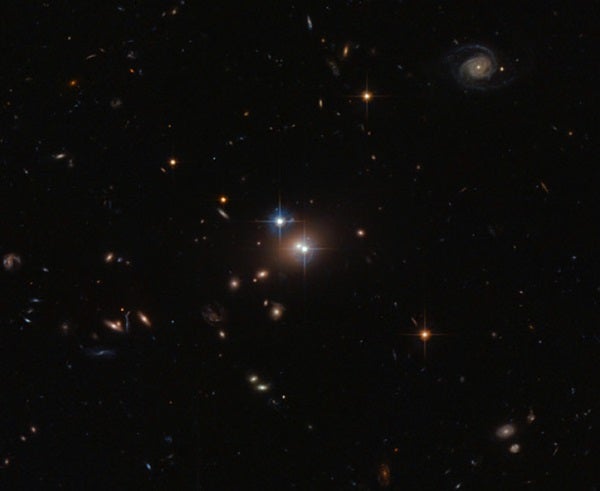Eminent physicist John Wheeler (known, among other things, for originally coining the term black hole) and one of his cosmic thought-experiments partly inspired our proposed “cosmic Bell test.” In the 1970s, Wheeler suggested using light from quasars in a different sort of quantum experiment.
If a massive galaxy lurks between Earth and a distant quasar, its mass can distort the paths that the quasar’s light takes. The intervening galaxy acts as a gravitational lens, resulting in at least two lensed images of the quasar around the massive galaxy. Light can act as both a wave and a particle; this dual characteristic is a fundamental piece of quantum theory.
In quantum mechanics, a single photon can behave as if it had taken more than one path around the galaxy. It can remain in a combination of, say, path one and path two until it reaches our telescope. But whether we infer that the photon took one path or both depends on what kind of experiment we choose to perform.
If we choose a “cosmic interferometer” experiment designed to measure the wavelike properties of the quasar photons by combining the light from the two lensed images — built up one photon at a time — we will observe telltale interference patterns from both possible paths. If instead we try to measure which path the photons took and reveal their particle nature, we destroy any quantum interference pattern. In Wheeler’s “delayed choice” thought experiment, we make our decision about which test to perform billions of years after the quasar emitted the light.
How can an experimental choice made today retroactively determine choices presumably made by each photon billions of years ago, when they actually “decided” whether to take a single path or both? Or are we asking the wrong question by incorrectly presuming that the traveling photons had a definite state before eventually being measured? Wheeler’s proposal elegantly highlights such deep quantum conundrums.










